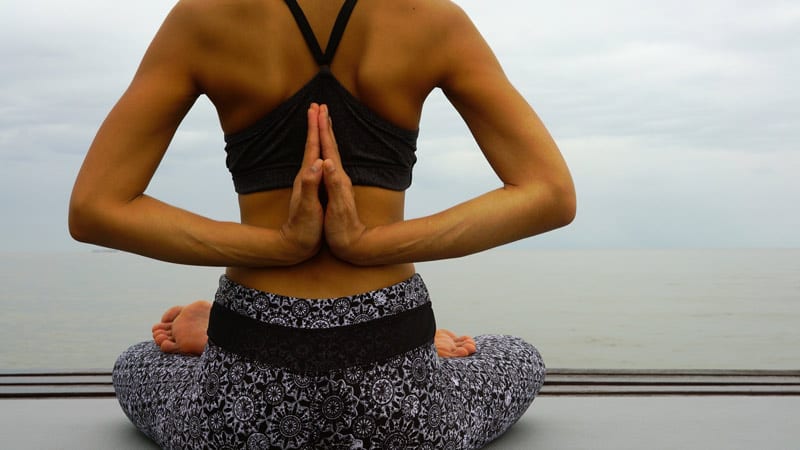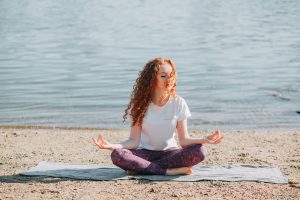I glanced down at the speedometer and realized that I was doing 80 mph, much faster than usual. After slowing down to a more reasonable speed, the engine of my beat-up station wagon was still revving strangely. Something wasn’t right. I pulled my foot off the brake and, as an experiment, removed it from the gas pedal as well, only to see my speed increase again, out of control.
Thanks to some advice from my husband, who I frantically called on my phone, I managed to stop the vehicle. White smoke billowed from the front end, where the brakes had been taxed to the limit, trying to halt the car’s forward progress. I turned it off and jumped out. Physically, I felt fine. Mentally was another story.
My Panic Disorder Diagnosis
According to the Anxiety and Depression Association of America, over six million American adults suffer from panic attacks. Back in 2016, I became one of them. It all started with a simple shopping trip. On the way home, while driving down the freeway, I discovered that my car was speeding up on its own. Later, I found out that the cruise control cable snapped and pressed the accelerator.
The day after the car incident, I wound up in the emergency room with my first panic attack. Over time, I began having them daily. The medication the hospital prescribed helped, but I started living in fear at the very thought of suffering another one. The feeling became overwhelming, so I started doing some investigation, hoping for relief.
Researching Panic Disorders
Looking into things more deeply is my go-to method of solving problems and taking control of a situation. As it turns out, many people search for ways to prevent their panic attacks, so I was able to find lots of helpful resources and ideas online.
Experts suggest a number of different approaches to remain calm in the face of the body’s natural fight-or-flight response. This overstimulated feeling is a hallmark of panic disorder, the condition that causes panic attacks. Many methods, such as doing deep breathing exercises and determining potential triggers, are known for having a calming effect and helping to control anxiety.
In my case, getting behind the wheel of a car, even one that I wasn’t driving, triggered my anxiety, but it wasn’t something that I could avoid. Some suggested techniques, such as telling other people what was happening, did seem to help, especially since my husband also has panic attacks. He understood what I was going through. I also began going for short walks every day, since regularly exercising releases endorphins that made me feel a little better.
Creating a Relaxing Space
Another idea that I found worked well required a bit more effort than taking deep breaths and spending time outdoors. Some studies I found mentioned that designing personal spaces, like bedrooms, to use as relaxing retreats, can be helpful when dealing with anxiety. The evidence suggested that calming colors, like blue and light green, have a soothing effect on the brain, so a tranquil room can provide a safe place to go at the beginning of an anxiety attack.
I also learned that certain types of external stimuli, like sights and sounds, can intensify a panic attack’s magnitude. Taking the time to declutter a room and remove some items can make the space feel more open and organized. Maintaining a clean space with everything neatly put away kept my brain from feeling overwhelmed by so much visual input.
It took a few weeks to get my bedroom repainted and cleared of belongings that I hadn’t used in a while, but the result was worth it. I now had a spot to retreat to when my anxiety levels soared. This, along with a relaxation technique I discovered, helped me feel as though I once again had control over my mind and body.
Using Progressive Muscle Relaxation
Out of all of the coping techniques that I tried, progressive muscle relaxation worked the best. This method required me to sit very still and focus on breathing deeply while tensing and relaxing the muscle groups in my body one set at a time. It sounded unusual at first, as the list of areas to go through included muscles that I never even considered. Who thinks of clenching their eye and nose muscles, or the ones near the ears? The science behind the technique made sense, so I gave it a try.
I found a related routine that consisted of closing my eyes, tensing a muscle group, and then slowly counting to three as I relaxed them, focusing on my breathing at the same time. Starting with my scalp muscles and moving downwards, I felt myself relax. The next time I had a panic attack, I sat back and worked through the steps and found that the process calmed me down.
Finding Some Relief from Anxiety
Several years later, I’m mostly panic attack free, although I still carry medication with me, just in case. After some time and distance from the event, plenty of therapy, and a new vehicle, I was finally comfortably driving again. Now, even though it happens rarely, when I feel that telltale racing heart and chills, I stop what I’m doing, take a few deep breaths, and begin my relaxation routine. Now I feel more empowered, knowing that I have the ability to control my anxiety rather than allowing it to control me.
About the Author: Hazel Bennett is a freelance writer and blogger. She has a degree in communications and lives in Northeastern Ohio. Hazel loves writing about numerous topics and showcasing her expertise with words.
Photo by sippakorn yamkasikorn on Unsplash
The opinions and views expressed in any guest blog post do not necessarily reflect those of www.rtor.org or its sponsor, Laurel House, Inc. The author and www.rtor.org have no affiliations with any products or services mentioned in the article or linked to therein. Guest Authors may have affiliations to products mentioned or linked to in their author bios only.
Recommended for You
- Veterans and Addiction Recovery: How Families Can Support Their Service Member’s Healing Journey - July 14, 2025
- Trauma-Aware Yoga: A Gentle Path to Healing and Recovery - July 10, 2025
- Why Eating Disorders in Men Are Often Missed - July 3, 2025





